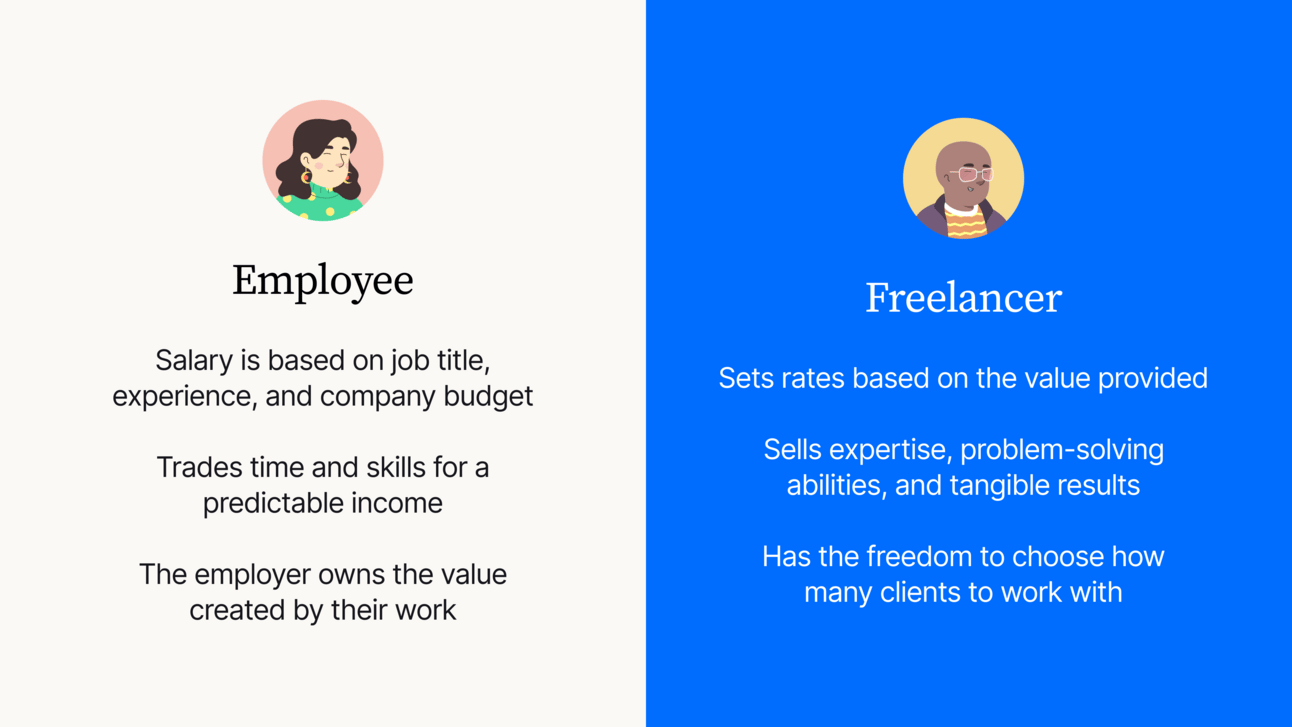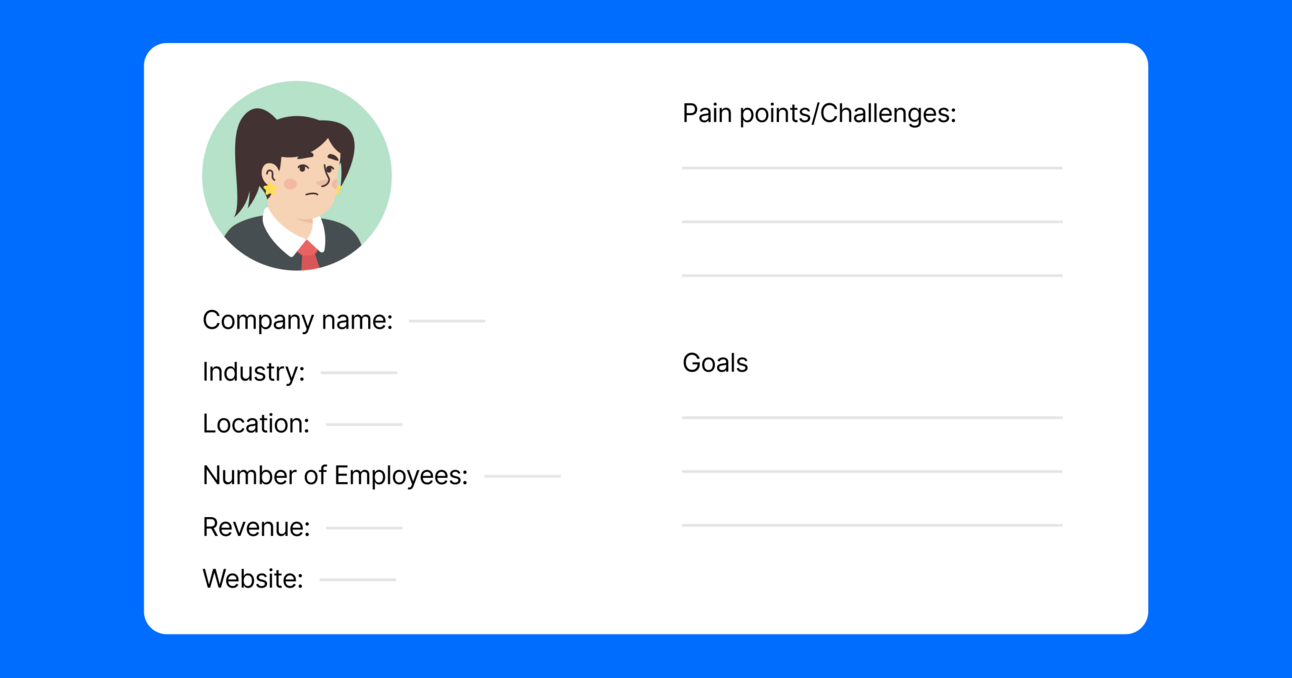- 96mins
- Posts
- How I went from a $2k to a $10k per project as a freelance designer
How I went from a $2k to a $10k per project as a freelance designer
An extensive guide on how to communicate value.
This week’s 96mins is all about understanding value creation and how to capitalize on it to consistently win bigger projects from clients.
Designers getting into the freelance game are often hindered by their lack of business savvy. Yes, they might win work, but it’s easy to undersell your time if you’re not aware of how your work impacts the business's bottom line. No one gets into freelancing to make $1,000 off two week worth of web design projects, that’s poor pricing, but most of us have been there at some point.
In this newsletter, we'll learn how to shift your mindset, price your services confidently, and charge what you're worth so you don’t end up on a criminally underpriced project.
If you’re looking for a quick fix, skip straight to the checklist at the bottom of this post.
But if you want the full picture, stick around. The context matters, and understanding it will set you up to identify, attract, and win work from clients who pay fairly.
The Employee vs. Freelancer Mindset
When you're an employee, your salary is determined by your job title, years of experience, and the company's budget. You trade your time and skills for a predictable salary, but the value you create is ultimately owned by your employer.
As a freelancer, you have the power to set your own rates based on the value you provide to your clients. You're not just selling your time; you're selling your expertise, your problem-solving abilities, and the tangible results you deliver.
Employees sell their business to one. Freelancers sell their business to as many as they want. Luckily, you don’t have to give up being an employee to take advantage of the perks.

Creating your ideal customer profile
It's essential to focus on your strengths and target the right clients who will appreciate and benefit from your unique skill set and experience in their industry. Take a moment to reflect on your past projects and identify the types of clients and industries where you've excelled. Consider factors like company size, niche, and the specific challenges they face. By creating an ideal customer profile based on your experience and expertise, you can better position yourself to attract high-value clients who are a perfect fit for your services.

Meet your clients where they are
Once you have a clear picture of your ideal client, it's time to start looking for them. Leverage your existing network and reach out to past clients or colleagues who might know of opportunities that align with your target market. Attend industry events, join relevant online communities, and engage with potential clients on social media platforms like LinkedIn or Twitter. By proactively seeking out clients who match your ideal profile, you'll be able to showcase your value more effectively and build lasting, profitable relationships.
You don’t need a complicated approach. You can literally reply to your target client’s posts with something thoughtful, and then message them after a few weeks of interaction asking for a chat. Many will overthink this, but it’s this simple.
Assessing and communicating your value
To charge what you're worth as a freelancer, you need to have a clear understanding of the value you bring to the table. Take a deep dive into your skillset and identify the specific areas where you excel. Are your UI design’s eye-catching? Do you design engaging brand identities? Or, are you good at delivering UX with product-led growth strategies?
Once you've identified your strengths, it's time to communicate that value to your clients. Show them how your design solutions have made a real impact on past projects, whether it's increasing user engagement, boosting conversion rates, or streamlining workflows. There are multiple ways to communicate this. Here are 5 I recommend that anyone can do:
🔴 Bare minimum - In last week's newsletter we walked through creating a portfolio for freelancing – can implement some basic alongside your portfolios. Sharing outcomes is crucial for building trust and demonstrating the real-world impact of your work.
🔴 Bare minimum - Share your work on social media and add the outcomes in the post. Take this up a level by recording a video narrating the work. This helps potential clients see the tangible results you've achieved.
🟢 Worthwhile - Create a newsletter (like ours) giving away secrets and insights that you use to help your customers achieve incredible results. This positions you as an expert and provides value upfront.
🟢 Advanced - Podcast - It's pretty easy to start documenting your knowledge/experience or leveraging your expertise for having discussions with peers via a podcast. Keep in mind that this may require a significant time investment to plan and record episodes consistently.
🟢 Advanced - Create a short guide/course content on your expertise and give it away for free. Increase your perceived domain expertise in your client's eyes by demonstrating you can educate. This can be a time-intensive project, but it can also serve as a powerful lead magnet for attracting potential clients.
Remember, the key is to start somewhere. Choose one or two of these recommendations and begin implementing them today. As you consistently communicate your value, you'll build a strong reputation and attract more of your ideal clients.
Freelance pricing strategies
One of the most common questions freelancers face is, "How much should I charge?" The answer depends on various factors, including your experience level, the scope of the project, and the value you're delivering. Let's explore three common pricing models and their pros and cons:
Day rates
Example: Charging $600 per day for design work.
Pros:
Ideal for: Designers who are just starting out and want a simple, easy-to-understand pricing model.
Ideal for: Projects with unclear scope or potential for many revisions.
Cons:
Not ideal for: Experienced designers who work efficiently and want to maximize their earnings.
Not ideal for: Clients who prefer predictable costs and clear project boundaries.
Project-based fees
Example: Charging a flat fee of $5,000 for a branding package that includes a logo, color scheme, and style guide.
Pros:
Ideal for: Designers with a strong understanding of their workflow and the time required for each type of project.
Ideal for: Clients who value transparency and predictable pricing.
Cons:
Not ideal for: Complex projects with many unknowns or potential for scope creep.
Not ideal for: Designers who are still refining their process and may underestimate the effort required.
Value-based pricing
Example: Charging $10,000 for a redesign that is projected to increase the client's revenue by $100,000 over the next year.
Pros:
Ideal for: Experienced designers who can confidently articulate and deliver high-value solutions.
Ideal for: Clients who are focused on achieving specific business outcomes.
Cons:
Not ideal for: Designers who are uncomfortable discussing the value of their work or lack experience in delivering measurable results.
Not ideal for: Clients who are primarily focused on cost and may not appreciate the value-based approach.
Subscription/one-person agency pricing
Example: Charging a monthly retainer of $3,000 for ongoing design support projected to increase the client's annual revenue by 50%.
Pros:
Ideal for: Designers who want to build long-term relationships with clients and have a predictable income stream.
Ideal for: Clients who need ongoing design support and prefer a dedicated design partner.
Provides an opportunity to deepen your understanding of the client's business and deliver more strategic value over time.
Cons:
Not ideal for: Designers who prefer a variety of projects and clients.
Not ideal for: Clients who have sporadic or short-term design needs.
May limit your ability to take on new clients or projects, as your capacity is tied to existing subscription commitments.
As you gain more experience and take on higher-value projects, don't be afraid to adjust your rates accordingly. Your pricing should reflect the expertise, value, and results you bring to the table.
When discussing pricing with potential clients, be transparent about your rates and the reasoning behind them.
Wrapping up
As you’re now aware, going from an employee mindset to that of a ✌️successful✌️ freelancer requires a shift in how you understand and communicate your value.
Quick checklist:
Individual unique strengths
Ideal Customer Profile
Communicate with and to ICP wherever they’re at sharing your story, work and domain expertise
Pick a pricing strategy that aligns with your preference
The key is to start taking action. Choose one or two strategies from this guide and begin implementing them today. As you consistently demonstrate your value and deliver impactful results, you'll attract more of your ideal clients and build a thriving freelance business.
Best,
Zaire